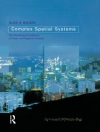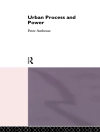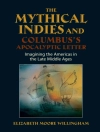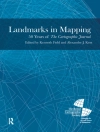This book approaches the challenges the Arctic has faced and is facing through a lens of opportunity. Through pinpointed examples from and dealing with the Circumpolar North, the Arctic is depicted as a region where people and peoples have managed to endure despite significant challenges at hand. This book treats the ‘Arctic of disasters’ as an innovated narrative and asks how the ‘disaster pieces’ of Arctic discourse interact with the ability of Arctic peoples, communities and regions to counter disaster, adversity, and doom. While not neglecting the scientifically established challenges associated with climate change and other (potentially) disastrous processes in the north, this book calls for a paradigm shift from perceiving the ‘Arctic of disasters’ to an ‘Arctic of triumph’. Particular attention is therefore given to selected Arctic achievements that underline ‘triumphant’ developments in the north, even when Arctic triumph and disaster intersect.
قائمة المحتويات
Chapter 1. A Light at the End of the Arctic Tunnel? Introducing a Triumphant Discourse on Arctic Scholarship (Nikolas Sellheim, Yulia Zaika & Ilan Kelman).- Part I: Narrating Arctic Indigenous Fantasies.- Chapter 2. Narrating Indigeneity in the Arctic: Scripts of Disaster Resilience versus the Poetics of Autonomy (Julian Reid).- Chapter 3. European Fantasy of the Arctic Region and the Rise of Indigenous Sámi Voices in the Global Arena (Reetta Toivanen).- Part II: From Homestead to Homeland.- Chapter 4. Cultural Heritage, or How Bad News Can also be Good (Susan Barr).- Chapter 5. Rehabilitation of the Northern Home: A Multigenerational Pathway (Yulia Zaika).- Part III: Making Rights Work.- Chapter 6. Compensation for Impact of Industrial Projects in Russia to Indigenous Peoples of the North (Tuyara N. Gavrilyeva, Natalia Yakovleva, Sardana I. Boyakova & Raisa I.Bochoeva).- Chapter 7. The Arctic Council and the Advancement of Indigenous Rights (Nikolas Sellheim).- Part IV: Risky Business with a Silver Lining.- Chapter 8. Not All Black and White: The Environmental Dimension of Arctic Exploration (Nadia French).- Chapter 9. Arctic Disaster Risk Reduction and Response as Triumph? (Patrizia Duda & Ilan Kelman).- Chapter 10. Triumphant Geopolitics? Making Space of and for Arctic Geopolitics in the Arctic Ocean (Klaus Dodds & Chih Yuan Woon).- Chapter 11. Fostering US-Russia Cooperation in the Arctic through Disaster Diplomacy Efforts (Yekaterina Y. Kontar).
عن المؤلف
Nikolas Sellheim is a visiting postdoctoral researcher at the Helsinki Institute of Sustainability Science (HELSUS), University of Helsinki. His primary research deals with the role of local communities in international conservation law and he has intensively published on the seal hunt. His book The Seal Hunt. Cultures, Economies and Legal Regimes was published by Brill in 2018. He works as co-Editor-in-Chief of Polar Record, published by Cambridge University Press.
Yuliya Zaika is a researcher at the Faculty of Geography, Lomonosov Moscow State University. Holding a Specialist degree in Environmental management, Yulia has devoted 6 years of her scientific pathway to study the snow cover changes in the Russian Arctic. Driven by the interests in socio-economic development of the northern home region and by the family history, Yulia has made a transition from natural sciences to more social perspective, and is at the moment finishing her Ph D thesis devoted to the socio-economic and environmental challenges and paradigms in the development of single-industry (mining) communities of the Murmansk region as a part of the Barents Euro-Arctic Region.
Ilan Kelman is a Reader in Risk, Resilience and Global Health at University College London, England and a researcher at the University of Agder, Kristiansand, Norway. His overall research interest is linking disasters and health, including the integration of climate change into disaster research and health research, which is crucial for the Arctic. This approach covers three main areas: (i) disaster diplomacy and health diplomacy (ii) island sustainability involving safe and healthy communities in isolated locations including the Arctic and (iii) risk education for health and disasters.












